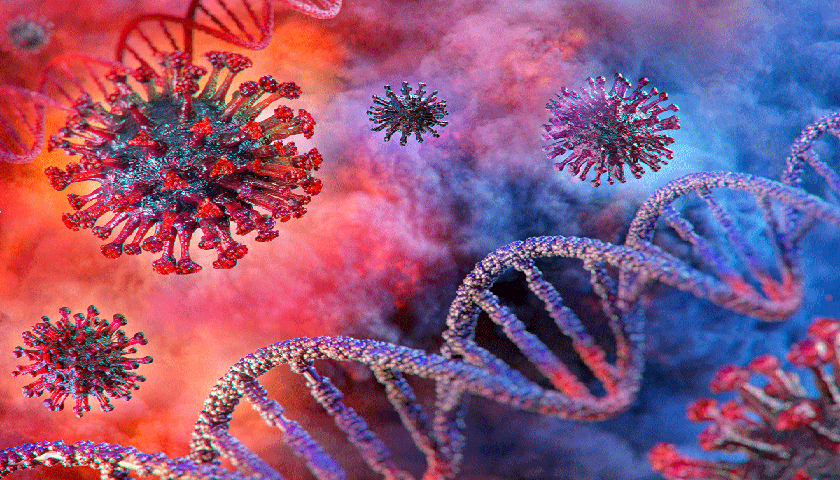June 5, 2020 will mark 39 years since the identification of HIV/AIDS as an emerging pandemic. To date the HIV pandemic is among the deadliest in our history behind only the 1918 Spanish Flu, the Small Pox outbreak of the 1500s, and multiple occurrences of the Black Plague between year 541 CE and the 14th Century. For the last 12 years I’ve dedicated my career to seeing its end.Now, we find ourselves in the midst of yet another pandemic — the novel COVID-19 coronavirus. In just 3 months, the total number of global cases has surpassed 380,000, with over 16,000 deaths and 100,000 recoveries. The HIV/AIDS pandemic and pandemics before it can teach us a lot about how we should respond to COVID-19.
In nearly 40 years of living in the time of HIV, we’ve learned that knowing your status is the most important step toward wellness. This means making sure everyone has access to reliable testing while prioritizing those who exhibit symptoms and are at greatest risk for transmission. HIV has taught us that the next step is to ensure that everyone who tests positive has access to life sustaining treatment to restore their health and keep those around them healthy as well. Finally HIV teaches us that prevention is the most effective way to contain and ultimately end a global pandemic.
Our collective response to COVID-19 would be well-served by heeding to these important steps. While the availability of testing and treatment are currently both limited and largely out or our control, we have a responsibility to be aware of the signs and symptoms of possible infection, and govern ourselves accordingly. 80% of COVID-19 infections are not severe and some may be asymptomatic, but for those who do exhibit symptoms, the most common include a consistent fever, a persistent dry cough, and shortness of breath. If you are otherwise healthy but believe you are experiencing mild symptoms, the recommendation is to stay at home and self-isolate for 14 days to reduce the risk of catching or spreading the virus. Older adults and individuals experiencing more severe symptoms who are either immunocompromised or living with chronic medical conditions like diabetes, heart disease, chronic lung disease, or chronic kidney disease — are at higher risk for poor outcomes and should self-isolate and contact a health care provider for further instructions.
Now, despite the current deficiencies in testing and treatment, prevention is completely within our control and remains the most effective measure against prolonging the COVID-19 pandemic. Be mindful that what we know about COVID-19 changes daily. The current wisdom is that it’s spread through respiratory droplets of infected persons who cough or sneeze. Therefore person-to-person social distancing of at least 6ft is recommended based on the average distance respiratory droplets travel via a cough or sneeze. If you must cough or sneeze avoid doing so into your hands, but rather your sleeve or a tissue that you then dispose of immediately. It’s also believed that COVID-19 can survive on surfaces for several hours, making our hands particularly vulnerable. People are encouraged to wash their hands frequently and thoroughly with a duration of at least 20 seconds per wash. When you don’t have access to soap and water use hand sanitizer with an alcohol content of at least 60%. Most importantly, avoid touching your face, specifically your T-zone, which includes your eyes, nose, and mouth.
Finally, in order to minimize further transmission of this potentially deadly disease – we have to respect the orders to stay at home for an indefinite amount of time. The quarantine dates back to the Middle Ages during one of the Black Plague pandemics, and it remains the best way to stave off widespread infection of a pathogen when there is no cure or vaccine, as is the case with COVID-19. Not only is it necessary that we stay at home for our health, it’s crucial to the sustainability of our overwhelmed healthcare system. Our healthcare system would literally collapse under the pressure of 160M symptomatic patients at the same time. Therefore, social distancing is to ensure that we don’t all get sick at the same time, so that those who are more likely to get sick, mainly seniors and immunocompromised folks, can be prioritized for care, while not displacing people who still require healthcare a part from the COVID-19 outbreak. This includes people living with HIV.
Whether it’s one months from now or one year from now, the COVID-19 coronavirus outbreak will eventually end – either by natural herd immunity as a result of widespread exposure, or assisted immunity in the form of a vaccine. That’s the good news. The bad news is we’ll still be left with an HIV/AIDS pandemic raging into its fourth decade with no natural immunity or viable vaccine in sight. The sooner we can coalesce around the lessons of HIV to make the COVID-19 pandemic history, the better positioned we’ll be to deliver on the promise that HIV/AIDS will no longer be a public health threat by the year 2030.
We can win, but only if we fight together!
#UBtheCURE

